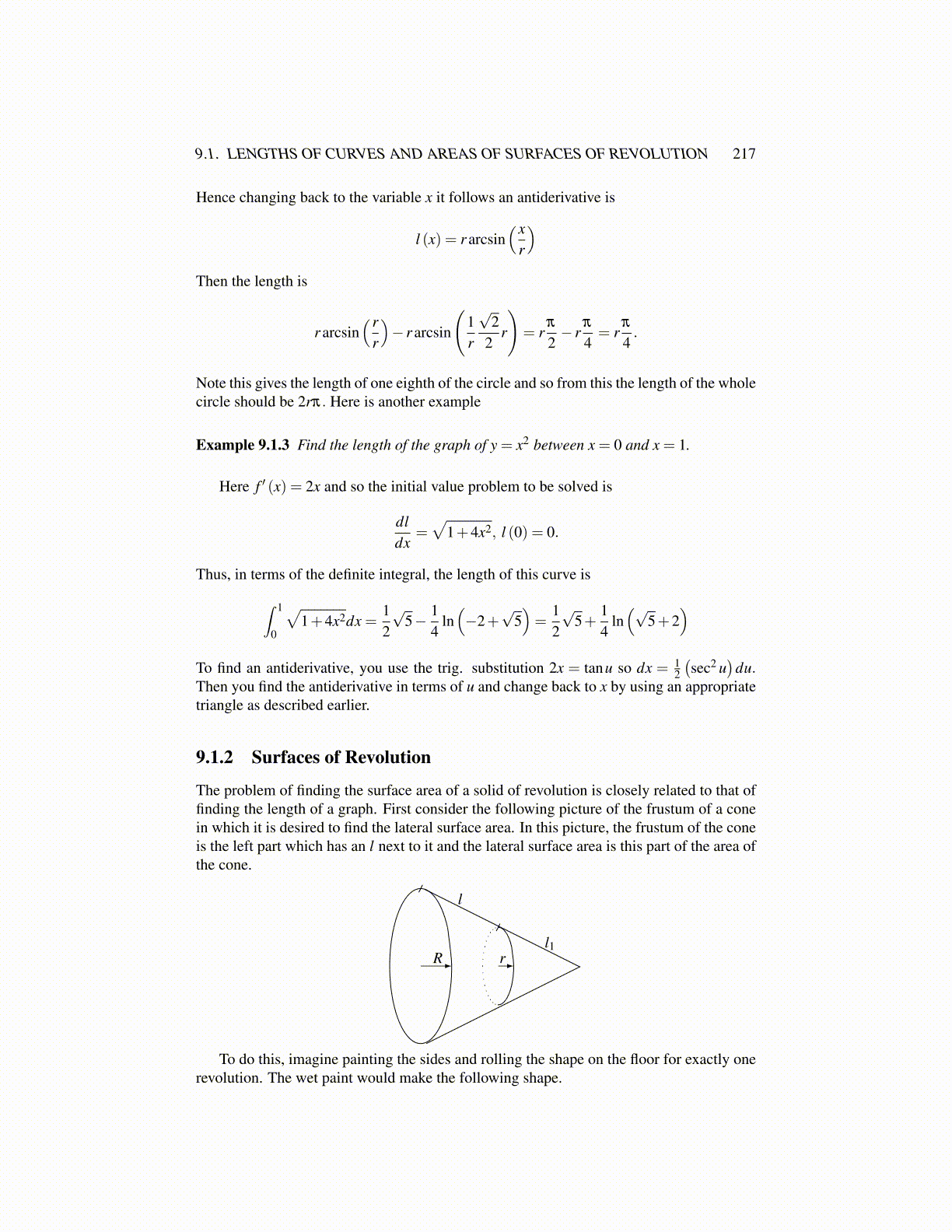
9.1. LENGTHS OF CURVES AND AREAS OF SURFACES OF REVOLUTION 217
Hence changing back to the variable x it follows an antiderivative is
l (x) = r arcsin(x
r
)Then the length is
r arcsin( r
r
)− r arcsin
(1r
√2
2r
)= r
π
2− r
π
4= r
π
4.
Note this gives the length of one eighth of the circle and so from this the length of the wholecircle should be 2rπ. Here is another example
Example 9.1.3 Find the length of the graph of y = x2 between x = 0 and x = 1.
Here f ′ (x) = 2x and so the initial value problem to be solved is
dldx
=√
1+4x2, l (0) = 0.
Thus, in terms of the definite integral, the length of this curve is
∫ 1
0
√1+4x2dx =
12
√5− 1
4ln(−2+
√5)=
12
√5+
14
ln(√
5+2)
To find an antiderivative, you use the trig. substitution 2x = tanu so dx = 12
(sec2 u
)du.
Then you find the antiderivative in terms of u and change back to x by using an appropriatetriangle as described earlier.
9.1.2 Surfaces of Revolution
The problem of finding the surface area of a solid of revolution is closely related to that offinding the length of a graph. First consider the following picture of the frustum of a conein which it is desired to find the lateral surface area. In this picture, the frustum of the coneis the left part which has an l next to it and the lateral surface area is this part of the area ofthe cone.
rR
l
l1
To do this, imagine painting the sides and rolling the shape on the floor for exactly onerevolution. The wet paint would make the following shape.